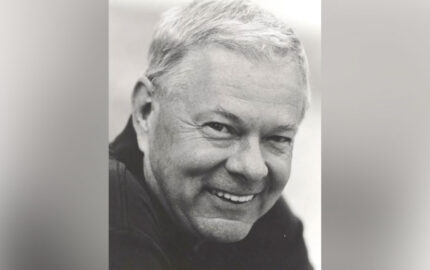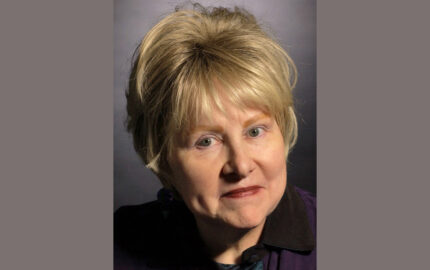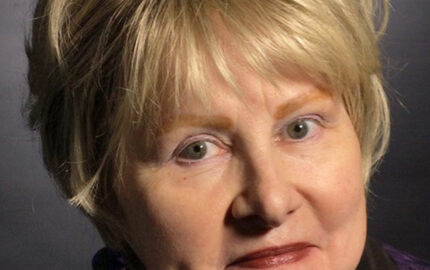How lucky for Dori J. Maynard that she got to be a Nieman Fellow (1993), just like her father, Robert C. Maynard, had 27 years before. And how lucky for all of us in the U.S. that she followed and expanded her father’s work as the nation’s most influential advocate for news media diversity.
Feeling devastated upon hearing of Dori’s death, I scanned my brain to bring forth some good memories. She was a teenager in 1975 when I first met her at Bob’s Adams Morgan home in D.C. Dining over Bob’s scrumptious “Maynard fried chicken,” a group of us brainstormed over what then seemed to be an alien idea in most U.S. newsrooms: diversity. At that time, people of color made up only about 2 percent of U.S. daily newspaper staffs.
What emerged from those conversations was our establishment of the Institute for Journalism Education, which offered training for journalists of color at the University of California-Berkeley. Bob Maynard, the institute’s first chair, advocated for the integration of more people of color in newsrooms and increased diversity in news coverage. When Bob died in 1993, the institute was renamed in Bob’s honor.
[sidebar head="Remembering Dori Maynard" style="right" id="remembrances"]Dori Maynard 'saw the possibility of change in almost everyone'
By Geneva Overholser, NF '86
Dori J. Maynard Believed 'Journalism and Life Demand All Voices'
By Mary C. Curtis, NF '06
Farewell Dori J. Maynard. And thank you.
By Latoya Peterson, Fusion
For Dori Maynard, diversity in journalism just made sense
By Brenda Payton, Oakland Tribune
What I wish I would have told Dori Maynard in our last conversation
By S. Mitra Kalita, Poynter Mediawire
[/sidebar]
Dori, as president of the Maynard Institute for Journalism Education, not only followed Bob’s footsteps, she ushered it into our 21st century technology-driven media world and broadened its impact by helping to make race and diversity a greater part of the national dialogue.
Dori’s contributions and achievements are long and impressive, as evidenced by posts on her Facebook page and the Maynard site. Let me just touch on one of them. Dori invited a score of us journos to Oakland in 2002 to acquaint us with the Fault Lines concept. (Dori wrote "Falling Into the Fault Line Chasm" for Nieman Reports in 1998.)
As usual, Dori blended logic, data, and humor in her presentation. She said Bob had written about five “Fault Lines” that tended to divide Americans: Race/ethnicity, gender, class, age, and geographic location. We learned how the concept presented a helpful analytical tool to discuss diversity. By using it, journos could analyze if certain groups are included or excluded in news coverage. We all became true believers in the diagnostic framework. We spread the word in newsroom workshops from Newark to San Antonio.
Today, the Fault Lines framework is taught in j-schools and used in newsrooms across the country. A few years ago, when I lectured on Fault Lines at the Annenberg journalism school at the University of Southern California, I again conferred with Dori, the expert. She agreed other diversity factors, including sexual orientation, religion, and political views, are also important Fault Lines.
Bob and Dori distinguished themselves as the first father-daughter Nieman Fellows. Bob was a pioneer in championing media diversity. Dori shined in her own light as a beacon of information and understanding.
Feeling devastated upon hearing of Dori’s death, I scanned my brain to bring forth some good memories. She was a teenager in 1975 when I first met her at Bob’s Adams Morgan home in D.C. Dining over Bob’s scrumptious “Maynard fried chicken,” a group of us brainstormed over what then seemed to be an alien idea in most U.S. newsrooms: diversity. At that time, people of color made up only about 2 percent of U.S. daily newspaper staffs.
What emerged from those conversations was our establishment of the Institute for Journalism Education, which offered training for journalists of color at the University of California-Berkeley. Bob Maynard, the institute’s first chair, advocated for the integration of more people of color in newsrooms and increased diversity in news coverage. When Bob died in 1993, the institute was renamed in Bob’s honor.
[sidebar head="Remembering Dori Maynard" style="right" id="remembrances"]Dori Maynard 'saw the possibility of change in almost everyone'
By Geneva Overholser, NF '86
Dori J. Maynard Believed 'Journalism and Life Demand All Voices'
By Mary C. Curtis, NF '06
Farewell Dori J. Maynard. And thank you.
By Latoya Peterson, Fusion
For Dori Maynard, diversity in journalism just made sense
By Brenda Payton, Oakland Tribune
What I wish I would have told Dori Maynard in our last conversation
By S. Mitra Kalita, Poynter Mediawire
[/sidebar]
Dori, as president of the Maynard Institute for Journalism Education, not only followed Bob’s footsteps, she ushered it into our 21st century technology-driven media world and broadened its impact by helping to make race and diversity a greater part of the national dialogue.
Dori’s contributions and achievements are long and impressive, as evidenced by posts on her Facebook page and the Maynard site. Let me just touch on one of them. Dori invited a score of us journos to Oakland in 2002 to acquaint us with the Fault Lines concept. (Dori wrote "Falling Into the Fault Line Chasm" for Nieman Reports in 1998.)
As usual, Dori blended logic, data, and humor in her presentation. She said Bob had written about five “Fault Lines” that tended to divide Americans: Race/ethnicity, gender, class, age, and geographic location. We learned how the concept presented a helpful analytical tool to discuss diversity. By using it, journos could analyze if certain groups are included or excluded in news coverage. We all became true believers in the diagnostic framework. We spread the word in newsroom workshops from Newark to San Antonio.
Today, the Fault Lines framework is taught in j-schools and used in newsrooms across the country. A few years ago, when I lectured on Fault Lines at the Annenberg journalism school at the University of Southern California, I again conferred with Dori, the expert. She agreed other diversity factors, including sexual orientation, religion, and political views, are also important Fault Lines.
Bob and Dori distinguished themselves as the first father-daughter Nieman Fellows. Bob was a pioneer in championing media diversity. Dori shined in her own light as a beacon of information and understanding.


